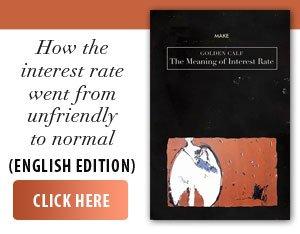The end of the summer calendar recorded a tense economic and political reality in our country, in which the governing coalition was forced to combine financial stability measures with attempts to restore confidence in the population and external partners.
Especially since the budget execution at the end of July showed a deficit of 4.04% of GDP, equivalent to 76.44 billion lei, 5.4 billion higher than in the same period in 2024. Under these conditions, the Ministry of Finance was forced to continue in August the policy of borrowing from foreign and domestic capital markets and to issue new issues of FIDELIS and TEZAUR government bonds, attracting billions of lei to the state budget to cover necessary expenses.
During this time, the Government had to continue the social dialogue with employers, unions and representatives of the public administration regarding the second package of fiscal measures, a package that was approved by the Executive at the end of the month, corrected in the meeting of September 1 and assumed in Parliament at the beginning of the first month of autumn.
The measures taken by the Government are necessary, a fact also demonstrated by the maintenance of the sovereign rating by Fitch in August, but with a negative outlook, as a signal of the structural vulnerability of public finances, as well as by the visit to Bucharest of representatives of the Moody's rating agency.
In parallel, the monetary policy was calibrated by the NBR Board of Directors, which on August 8 decided to maintain the monetary policy interest rate at 6.50% per year, with Lombard and deposit facilities at 7.50% and 5.50, respectively. The central bank sent a message of caution, stressing that the reliberalization of the energy market starting July 1 and the increase in VAT and excise rates in August have fueled inflationary pressures, which for the time being rules out monetary easing. The inflation report presented on August 12 forecast a peak of inflation of 9.6-9.7% in September, followed by a gradual correction, with a return to the target range only towards the end of next year. However, the NBR revised upwards the forecast for the end of 2025 to 8.8%, almost double the previous estimate, reflecting the strong supply-side shocks and increasingly high inflationary expectations. The revision of the forecast was necessary especially since, according to the National Institute of Statistics, the inflation rate reached 9.9% in August, following the reliberalization of the energy market and the entry into force of most of the measures provided for in the first fiscal package.
The adoption of the second package of fiscal corrective measures was intended to reassure investors and avoid the risk of a rating downgrade, but it deepened social tensions and amplified the political debate.
In economic terms, attention focused on two major axes: the reform of the private pension system and the renegotiation of the National Recovery and Resilience Plan. The approval by the Government and the submission to Parliament of the draft law on the payment of private pensions marked an essential step in aligning Romania with OECD standards, but also in guaranteeing that the savings accumulated by over nine million participants will be transformed into secure and predictable income. It is a strategic measure, both for long-term social protection and for the country's credibility with international partners.
In parallel, the Government conducted difficult negotiations with the European Commission to adjust the PNRR, in the face of massive overcontraction and increasingly burdensome fiscal constraints. The result was a preliminary agreement whereby Romania benefits from a total allocation of 21.62 billion euros, of which 13.56 billion are non-reimbursable. The government decided to prioritize mature projects, with a high degree of execution, and to suspend or abandon projects in their early stages, in order to avoid the risk of losing European funds. This painful but necessary selection process became a test of responsibility in the management of public money and a test of the ability to transform the PNRR into a success story by August 2026. However, August 2025 also showed the fragility of financial balances. Emergency ordinances regarding the suspension of contracts and the strict regulation of public commitments were adopted to avoid severe macroeconomic consequences and the risk of not fitting into the assumed fiscal trajectory. In this context, the government has tried to send a message of transparency and responsibility, publishing the lists of investments held and promising a publicly accessible dashboard, intended to restore citizens' trust in the institutions' ability to deliver concrete results.
• Budget deficit of 4.04% at the beginning of August
The economic and financial prospects of the last summer month were marked by the execution of the consolidated general budget at the end of July, which confirmed the persistent tensions in Romania's public finances, the deficit rising to 76.44 billion lei, equivalent to 4.04% of GDP, 5.4 billion more than in the same period last year. Although budget revenues increased significantly, by 11.8% compared to the first seven months of 2024, reaching 370.77 billion lei, the pace of expenditures remained alert, reaching 447.21 billion lei, up by 11.1%. The pressure comes especially from the area of social assistance, where the recalculation of pensions and the compensation of energy bills pushed costs to 147.54 billion lei, but also from the increase in interest expenses, which advanced by almost 10 billion lei in a single year. Higher revenues from payroll and income taxes, supported by the elimination of some tax facilities, but also from excise duties and VAT, provided a breath of fresh air to the budget, but insufficient to correct structural imbalances. In this context, the warning of Finance Minister Alexandru Nazare regarding the need to maintain budgetary discipline and responsibility in budgetary rectification is not just a statement of principle, but a critical condition for avoiding a downgrade of the country's rating.
However, August brought a series of measures aimed at diversifying financing sources and strengthening Romania's attractiveness on domestic and international markets. The launch of the seventh FIDELIS issue brought an absolute premiere: ten-year euro-denominated government bonds, which immediately attracted investor interest, becoming the best-selling instrument of the tranche and gathering subscriptions of over 589 million lei, equivalent to 38% of the total attracted. In just eight days, the FIDELIS issue mobilized over 1.5 billion lei, confirming the population's trust in this safe and transparent savings mechanism. In parallel, the eighth edition of the TEZAUR program offered securities with maturities of 1, 3 and 5 years, with attractive interest rates of up to 7.85%, consolidating investment options for small investors. These programs not only support state financing, but also consolidate a culture of long-term savings, under advantageous fiscal conditions.
Externally, Fitch reconfirmed in August Romania's sovereign rating at BBB-/F3, with a negative outlook. The decision reflects investors' confidence in our country's membership of the European Union and in the Romanian economy's capacity to generate growth in the medium term, but also concerns about high deficits and the rapid increase in public debt. Maintaining the investment grade rating is vital for financing costs, and the agency's message confirms that Romania still has a window of opportunity for fiscal consolidation and reducing imbalances.
Also in August, the Ministry of Finance signed financing agreements for two strategic industrial projects, supporting both Automobile Dacia and Draxlmaier Romania in an effort to modernize and expand production capacities. The two projects, totaling investments of over 380 million lei (of which state aid amounts to 170 million lei), will create hundreds of jobs and contribute to balancing Romania's trade balance. In addition, the state aid scheme approved by Government Decision no. 300/2024, with a total budget of 2.25 billion lei, offers the private sector a strong incentive for large-scale projects in the manufacturing industry, conditional on clear deadlines and the use of new assets, with a long-term impact on the competitiveness of the economy.
• Package 2 of fiscal measures, approved with difficulty by the government coalition
Given the financial situation above, the need to quickly adopt the second package of fiscal measures and reforms was vital during the past month, but social tensions, endless debates within the governing coalition and the heated dialogue that the Executive had with the social partners pushed the moment of approval of this package towards the end of the last summer month.
In practice, the Government only approved on August 29 and rectified on September 1 the second package of fiscal measures and reforms, a legislative set assumed in the first week of September by Parliament, a package that marks one of the most important structural interventions in recent years, with direct effects on the special pension system, corporate governance, health, the functioning of autonomous administrative authorities and taxation.
The first component targets pensions in the judiciary, where the law introduces a gradual increase in the retirement age up to 65 years and a pension cap at a maximum of 70% of the last salary, thus eliminating the privileged situation in which the pension was equal to the income from activity. It is a difficult measure, but necessary to correct an anomaly compared to the rest of the pension system, in a Romania where the average pension does not exceed 600 euros. The reform does not yet solve the problem of the remuneration of magistrates, the source of thousands of lawsuits and huge costs for the state, but it sends a clear signal of equity and sustainability.
In the field of health, the reforms introduced in the second package aim to streamline spending and establish new operating rules. The Government assumed its initial form before Parliament, without the amendments proposed in Parliament being accepted, relying on the rapid implementation of changes in the system, given that health reforms are also part of the European milestones.
A major change was introduced at the level of corporate governance of public enterprises, by amending OUG 109/2011. The reform reduces the number of members of the boards of directors, caps allowances, limits bonuses and changes the ratio between financial and non-financial performance indicators, in an attempt to bring the management of state-owned companies closer to the principles of efficiency and economic realities. It is an adjustment made in dialogue with the OECD and the European Commission, aimed at preventing salary excesses and creating a culture of responsibility in the management of public resources.
As for autonomous administrative authorities, such as ASF, ANRE or ANCOM, the package adopted on September 1 provides for massive staff reductions, 10% in the specialized area and 30% in the support area, limiting organizational charts to strict standards, eliminating positions that do not correspond to officially recognized occupations, cutting management allowances by 30% and banning bonuses until 2028. It is a firm message regarding stopping waste and excessive privileges in institutions that have enjoyed luxurious remuneration in contrast to the level of income in the economy.
The fiscal component of this package is, without a doubt, the most sensitive. The Ministry of Finance introduced new rules to combat evasion and to rethink insolvencies and installments, maintained the turnover tax that was holding back investments and introduced a punctual taxation of deductible expenses in relation to external affiliates, limiting them to 1% of total expenses. The tax rate for large fortunes was also increased from 0.3% to 0.9%, with a direct impact on residential properties over 2.5 million lei and on luxury cars over 375,000 lei, while the tax on electric cars was reduced to stimulate the transition to sustainable transport.
Through the 2nd package of fiscal measures, the Government introduced a new architecture of the share capital, intended to discourage "empty shells" and to force a minimum financial robustness. For limited liability companies already registered, the share capital remains unchanged until the threshold of 400,000 lei net turnover is exceeded; once this threshold is exceeded, the obligation of a minimum share capital of 5,000 lei comes into effect, signaling that the level of activity must be supported by a minimum capital buffer. For newly established LLCs, the starting bar rises from the symbolic 1 lei to 500 lei, a still affordable amount, but sufficient to mark the separation between the company and the founder's wallet. The rule connects the share capital to the real size of the business and clears the field of undercapitalized entities that run high volumes with risk transferred to creditors and the state. In the mirror, the package also adjusts the capitalization obligations provided for by the company law, with a special chapter for the startup ecosystem. For companies in technology, energy and other strategic sectors in the early phase, sanctions and the obligation to convert debts to shareholders into share capital do not apply, precisely in order not to strangle the standard early financing mechanism based on convertible loans. Furthermore, professional investors, fund managers, entities with a predominant investment purpose, investors through crowdfunding platforms and individual business angels who invest between 2,500 and 200,000 euros without exceeding 25% of the capital, provided that the borrowed money is not withdrawn for four years, are explicitly exempted. It is a fine balance: on the one hand, the capitalization discipline for companies who's reached volume, on the other hand oxygen for innovation and scaling in the years when every leu must be flexible.
The measures target a total budgetary impact of 6.9 billion lei and represent an essential step to maintain the investment qualification, but also to avoid much harsher budgetary corrections.
The adoption by assuming responsibility sparked tensions and a wave of amendments in Parliament - no less than 291 - but the government rejected most of the proposals, maintaining the initial form for pensions, health and corporate governance and accepting only some specific adjustments to the autonomous authorities and the fiscal package.
• The reform on private pensions sparked controversy
Before approving the second package of fiscal measures, the Government decided on August 21 to amend the law on private pensions. The mechanism introduced in the draft law approved by the Executive and submitted to Parliament offers participants two main payment options: scheduled retirement funds and life pension funds. In the case of scheduled withdrawal, the pension will be paid monthly until the full reimbursement of the personal asset, with a minimum period of eight years. Providers will guarantee that the total payments will be at least equal to the accumulated asset, and in the event of death, the heirs will receive the remaining amounts. The life pension, on the other hand, will be paid throughout the life of the participant or the surviving spouse, its amount being calculated based on the available asset. The draft law provides for the introduction of a minimum threshold for accessing the private pension, equivalent to 12 social benefits (15,372 lei in 2025), and for amounts below this level, full or staggered payment is provided, without transfer to the payment funds. An important element of flexibility is the right of each participant to withdraw up to 30% of the personal asset at the time of entering the payment phase. This single amount can be used for immediate needs, before the monthly payments begin. The transfer of assets between funds or to the chosen provider will be carried out without commissions or penalties, thus strengthening the confidence of the participants.
The project also regulates the process of information and options for members: six months before reaching the legal retirement age, administrators are required to send participants clear details about the accumulated assets, payment conditions and choice possibilities, so that the payment contract with the provider can subsequently be concluded. This transparency represents an additional guarantee that future retirees can plan their incomes in full knowledge of the facts.
• BNR maintains the reference interest rate
In this macroeconomic and financial context, the maintenance on August 8 by the National Bank of Romania of the monetary policy interest rate at 6.5% per year, along with maintaining the interest rates of the standing facilities and the minimum required reserves, reflects a strategy of prudence, dictated by the accelerated rise in inflation and the successive shocks on the supply side. The inflation report published by the National Bank of Romania on August 12, 2025 confirms that our country is going through a critical moment: after the reliberalization of the electricity market and the increase in VAT and excise duties, inflation experienced an unexpected explosion, with a peak estimated by the National Bank of Romania at around 9.6-9.7% in September. We note that, according to statistical data from the National Institute of Statistics, inflation in August reached a rate of 9.9%, exceeding the National Bank of Romania's forecast for September.
Even in this context, the central bank is counting on a gradual moderation of price dynamics over the next year, as the transitory effects dissipate and the aggregate demand deficit widens, which would allow inflation to return to the target range by the end of 2026. However, this outlook depends not only on monetary policy, but also on how the government manages fiscal consolidation and Romania's capacity to accelerate the absorption of European funds, considered essential for avoiding a recession and stimulating investment.
In parallel, the evolution of the current account deficit and external debt continues to raise questions. In the first six months of 2025, the current account deficit increased by over two billion euros compared to the same period in 2024, while total external debt rose to over 212 billion euros, most of which is long-term debt. Even if the external debt service ratio has decreased, the high level of external imbalances remains a structural vulnerability. At the same time, foreign exchange reserves reached over 65 billion euros at the end of August, and total international reserves, including gold, amounted to almost 75 billion euros, providing Romania with an important safety net against external pressures.
However, the degree of coverage of short-term external debt with foreign exchange reserves decreased slightly, signaling that the NBR's vigilance remains necessary.
In his speech, Governor Mugur Isărescu stated that in the face of major supply shocks - energy liberalization, VAT and excise duty increases - the central bank could not afford to ease monetary policy, but on the contrary, it must send a firm signal to anchor inflationary expectations. In parallel, Mugur Isărescu drew attention to the importance of European funds, considered a lifeline for maintaining the pace of investments and for financing the balance of payments.
At the beginning of August, former President Ion Iliescu passed away and the declaration of August 7 as a day of national mourning sparked controversy among the political class and civil society due to the unclear role he played during the December 1989 Revolution, but also during the mining riots of 1990 and 1991, events for which he was indicted in two criminal cases investigated by the General Prosecutor's Office for over 30 years.
• Negative opinion for the E.On-MVM transaction
The transaction through which the Hungarian group MVM would have taken over the gas and electricity supply of E.ON Romania received a negative opinion on August 19 from the Commission for the Examination of Foreign Direct Investments, and this provisional verdict radically changes the dynamics of the local energy market. The negative opinion, which will be analyzed by the Supreme Council of National Defense, was expected by many experts, given that from the beginning there were serious suspicions about the real motivations and geopolitical implications of the deal. MVM, a company controlled by the Hungarian state and directly supported by the government led by Viktor Orban, is said to have a close collaboration with Russia, both through gas import contracts and through nuclear projects developed with Rosatom, which raised questions about Romania's energy security.
In defense, MVM representatives stated in an interview given at the beginning of September to the newspaper BURSA that, if they take over E.On's assets, the energy produced by its assets will be delivered to industrial and household consumers in our country, that it will not be delivered to Hungary and that Romanian gas will not be replaced by Russian gas.
The Hungarians' initial offer, estimated at 200 million euros, was considered exaggerated compared to the real value of the customer portfolio, assessed by former Energy Ministers at approximately 50 million. The interest of Romanian companies such as Romgaz or Petrom was quickly eclipsed by the high amount put on the table by MVM, which generated suspicions about the deeper purposes of the transaction.
The CSEID decision came amid a wave of withdrawals by large energy groups in Romania, discouraged by the lack of legislative predictability and repeated state interventions in price formation. After CEZ and Enel, E.ON is the third player to give up part of its local operations, and the attempt to sell the supply to MVM highlighted the vulnerabilities of a market where Romanian capital is too weak to compete with regional giants and where the geopolitical context directly influences economic decisions. In the next 90 days, the CSAT will have the final say, but the Commission's negative opinion already represents a strong message regarding the limits of the Romanian state's tolerance towards transactions with strategic implications.




















































